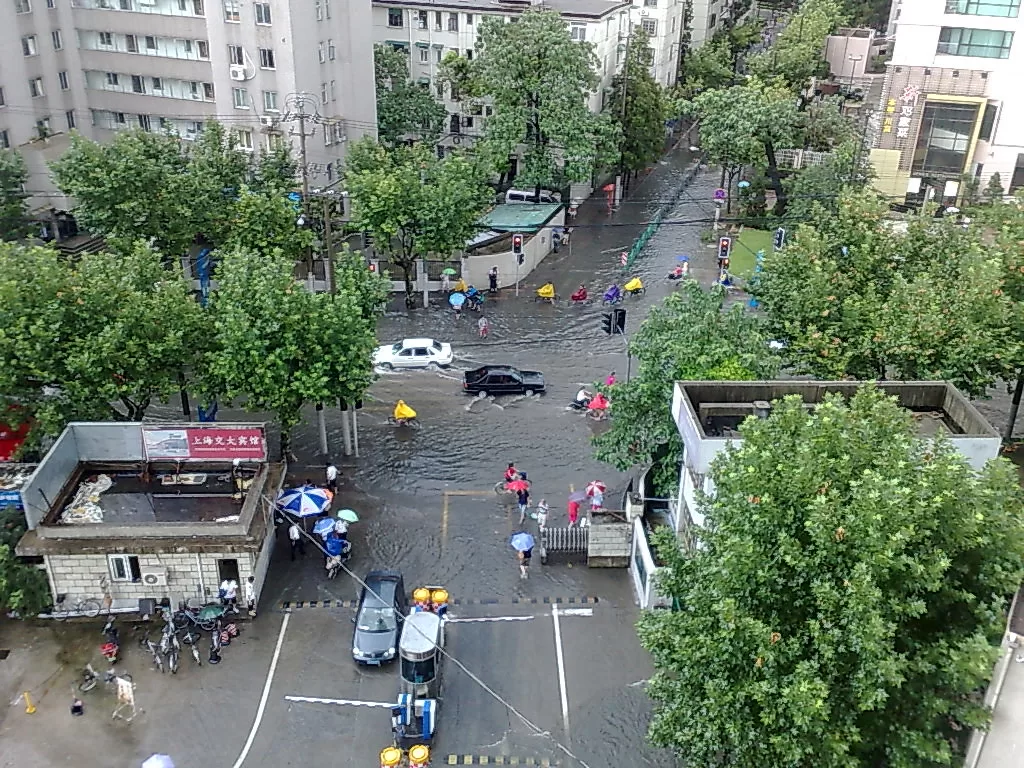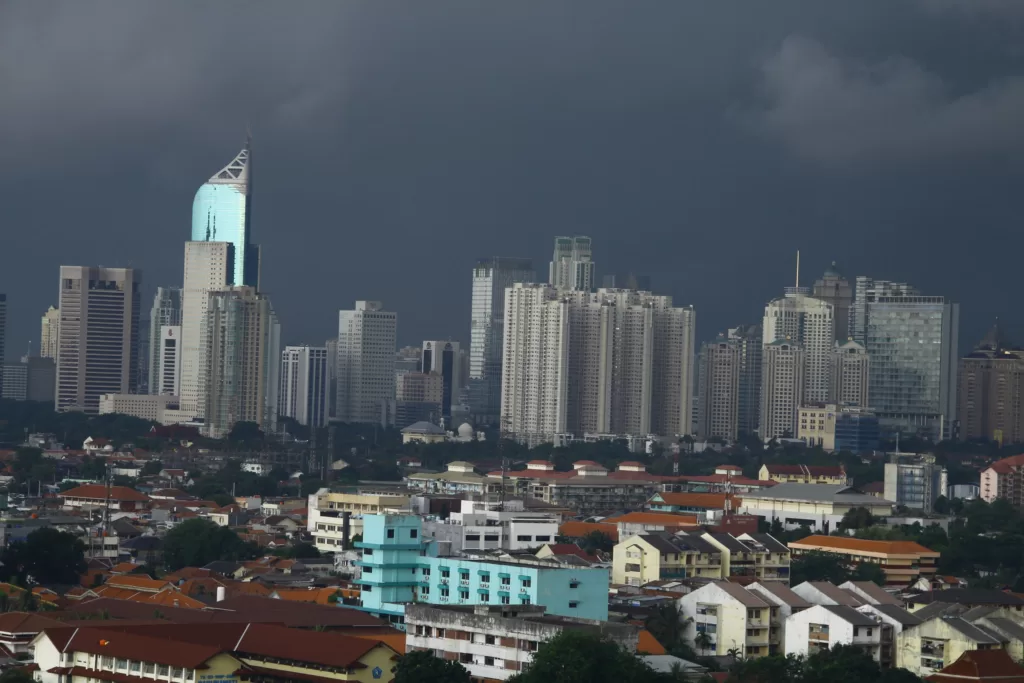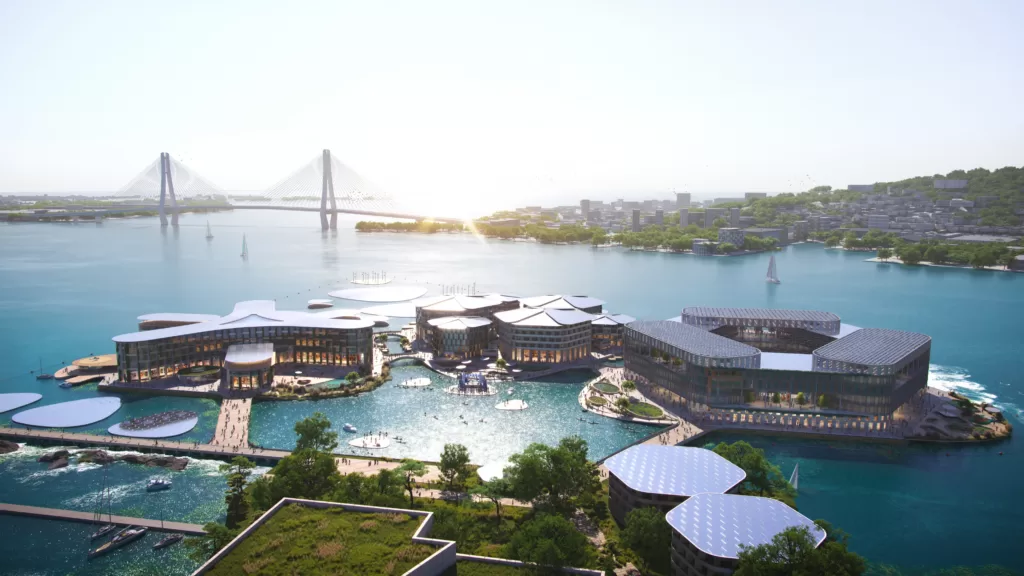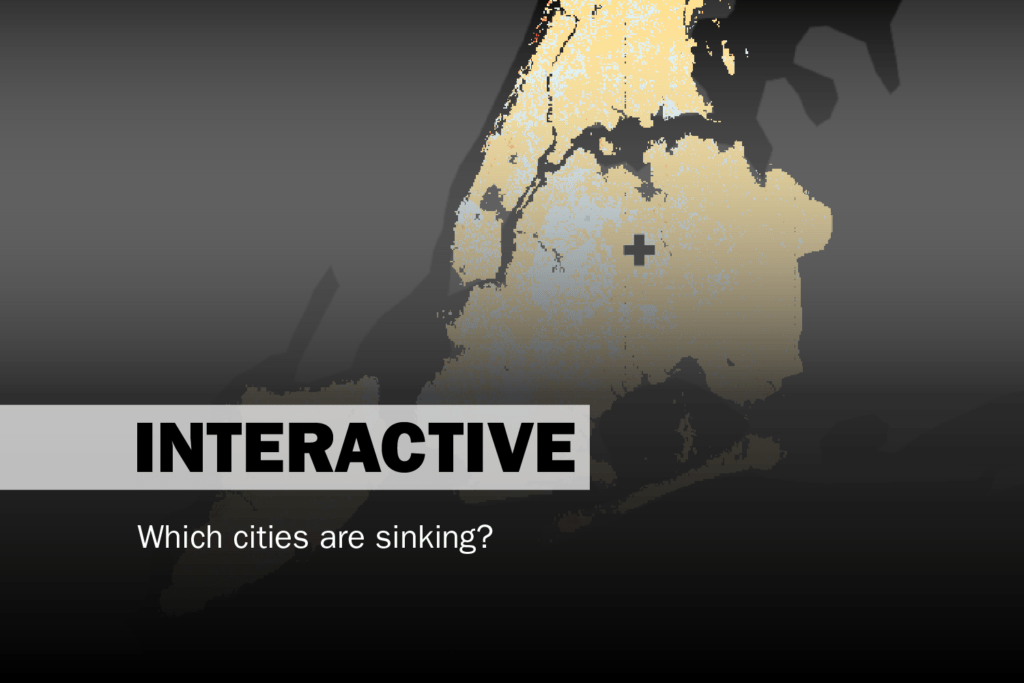Deep groundwater extraction wells are built by the business elites for commercial value. Better transparency will help manage them more sustainably.
 Jakarta’s sinking problem began in the 1970s and ties in directly with the number of groundwater extraction wells drilled during the period. : Floods in South Jakarta by Voice of America is available at https://bit.ly/3AXvSgI CC-BY-SA-3.0
Jakarta’s sinking problem began in the 1970s and ties in directly with the number of groundwater extraction wells drilled during the period. : Floods in South Jakarta by Voice of America is available at https://bit.ly/3AXvSgI CC-BY-SA-3.0
Deep groundwater extraction wells are built by the business elites for commercial value. Better transparency will help manage them more sustainably.
Indonesia’s capital, Jakarta, is sinking.
In some places land subsidence is 20cm a year. Sea level rises are around 0.5cm/year. The rate of land subsidence is therefore far above that of sea-level rise; in some places, by a factor of 40. The sinking land, combined with sea level rise, increases the flood risk of the city as a whole.
Flood events have dramatically increased over the past century. In 1892, only two flood events were recorded. By 1960 that had risen to five. By 2010 that had leapt to 10.
This increase is not so much related to rainfall as the data for total monthly rainfall between 1860 – 2007 is flat. Jakarta’s increasing susceptibility to flood risk, therefore, cannot be attributed to climate change-induced changes in rainfall patterns.
Engineers and geoscientists have identified at least four factors as the cause of the sinking of Jakarta —excessive extraction of groundwater; the increasing weight of buildings; compaction of the young sediment alluvial soils on which the city is built; and tectonic activities.
The two biggest contributing factors are the excessive extraction of groundwater and the weight of buildings.
One study shows how these two most important causes of land subsidence are directly related to the specific ways in which uneven urbanisation unfolds in Jakarta – the gradual emergence of the city as a machine to squeeze profit for the already wealthy and well-connected elites.
The excessive extraction of groundwater is an extended form of the vertical expansion of the city, consisting of the pumping of ever deeper wells to supply the water needed to make life above ground possible.
There is a clear correlation between groundwater extraction and subsidence. In 1879, there were 42 groundwater wells within the city, whereas in 1968 there were 352. This means that in 89 years, the number of groundwater wells increased three times.
However, by 1998, there were 3,626 registered groundwater wells in Jakarta —10 times as many.
The city’s land subsidence has been a problem since the 1970s, in line with the period during which the total number of registered groundwater wells increased the most.
In terms of the weight of buildings, the built environment in Jakarta expanded horizontally with a sharp increase since the 1960s. From the 1770s to the 1960s, Jakarta’s modern-planned built area grew by only 17.7 percent. But by 2014, the modern-planned part of the city occupied 83.7 percent of the city’s total area, which means in around five decades, it grew by almost 65.5 percent.
It started with a coup
There is a clear pattern: land subsidence (starting to be a problem in the 1970s), the increase of groundwater wells and the expansion of the modern part of the city, all increased distinctively since the 1960s. These changes were all shaped by Indonesia’s political context.
Between 1965 and 1998, Indonesia was under the control of an authoritarian regime called the ‘New Order’, led by an army general, Suharto. Suharto came to power through a coup d’etat backed by the CIA, overthrowing Sukarno, the first Indonesian president.
Under Sukarno, Indonesia embraced a nationalist-left type of development, for example through an agrarian reform programme. Under Suharto, Indonesia embraced capitalist-centralised development with Jakarta at its epicentre.
How Jakarta’s land subsidence is shaped by and contributes to shaping the uneven urbanisation of the New Order regime is expressed in the causes of its sinking: vertical extended urbanisation through excessive groundwater extraction and horizontal expansion of the modern part of the city through offices, malls and residential areas.
Deep groundwater wells require more money to build and that’s why usually they are built by specific sectors which can afford them, such as hotels, malls and high-class residential developments. They are the main cause of subsidence; not the shallow groundwater wells used by the urban poor settlements.
Likewise, Jakarta’s heaviest buildings are in the commercial sectors which massively converted the green part of the city into myriad hotels, malls and luxury settlements. Many of the developers were identifiable as part of Suharto’s New Order crony capitalists.
Jakarta’s plight has its root in the way in which Indonesia, was governed from the beginning of the New Order regime to now.
Making groundwater extraction accountable – in terms of the total number of deep wells, their depth, the volume of extracted water, and the builders/ owners doing the extracting — is one possible solution to the problem.
Transparent governance of groundwater can then be done in tandem with the improvement of piped water services as part of a more centralised plan for Jakarta’s development beyond the uneven urbanisation of capitalist-controlled development.
Bosman Batubara is a postdoctoral researcher in Human Geography and Spatial Planning, Utrecht University, Netherlands. Margreet Zwarteveen is with the Amsterdam Institute of Social Sciences Research, University of Amsterdam, the Netherlands and together with Michelle Kooy with the Department of Water Governance, IHE-Delft Institute for Water Education, Delft, the Netherlands. They declare no conflict of interest.
Originally published under Creative Commons by 360info™.













